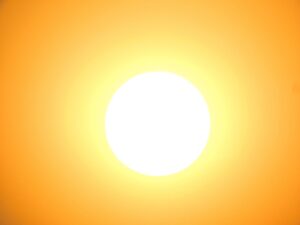UNITED STATES – Summertime, 2024 – Heat-related illness is the nation’s leader of weather-related fatalities. About 700 people every year die in the United States from exposure to extreme heat, according to the US Centers for Disease Control and Prevention (CDC). Climate change has caused more frequent extreme weather events like higher temperatures and heat waves; therefore, people are faced with more occasions to develop heat-related illness.
People can overheat very quickly leading to potential health problems. Heat exhaustion occurs to due to loss of water and salt from excessive sweating. Signs include: headache, dizziness, fainting, weakness, heavy sweating, confusion, thirst, nausea or vomiting. People should get out of the heat with any signs of heat exhaustion. Heat stroke is a more severe condition and can be fatal. Sweating stops and the body can no longer remove excess heat. Signs include: confusion, passing out, seizures, and hot dry skin. Anyone with signs of heat stroke should be moved to a cooler place to lower body temperature immediately followed by a 911 call for immediate medical assistance.
Many factors play a role creating heat stress like environmental conditions, physical activity, clothing or protection gear, and individual risk factors. Environmental heat factors include: air temperature, humidity, local radiant heat sources, and air flow. The heat index, commonly used to measure environmental conditions, is determined by air temperature and humidity. An index above 80 is considered to be a significant minimal threshold to develop heat-related illness.
Most outdoor fatalities occur in the first few days of working in hot environments because the body has not built up a tolerance to heat. The lack of acclimatization is one of the major risk factors for heat-stress fatalities at work. Acclimatization is a beneficial physiologic adaptation of building up a tolerance to heat that occurs after repeated exposure to a hot environment.
Millions of workers are exposed to heat in the workplace and may develop heat-related illness in indoor and outdoor environments. A disproportionate number of these jobs are held by persons of color. At-risk indoor industries include: kitchens, bakeries, steel mills, manufacturing with local heat sources, and warehouses. At-risk outdoor industries include: farming, construction, landscaping, and oil operations.
Listen to the full report below:
Contact: Dr. Dick Needleman, Health reporter, 103.3 AshevilleFM, healthyasheville@ashevillefm.org
